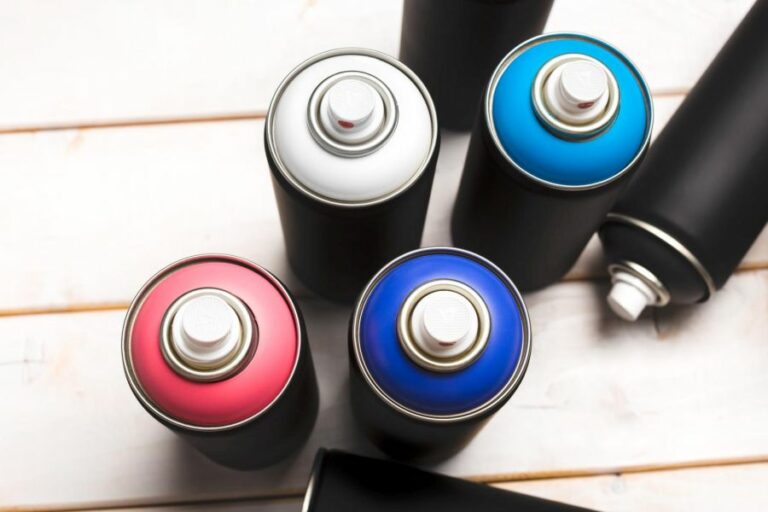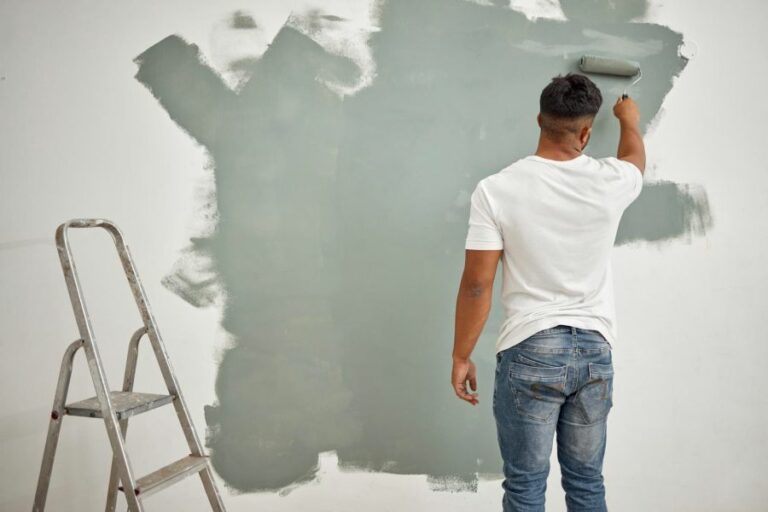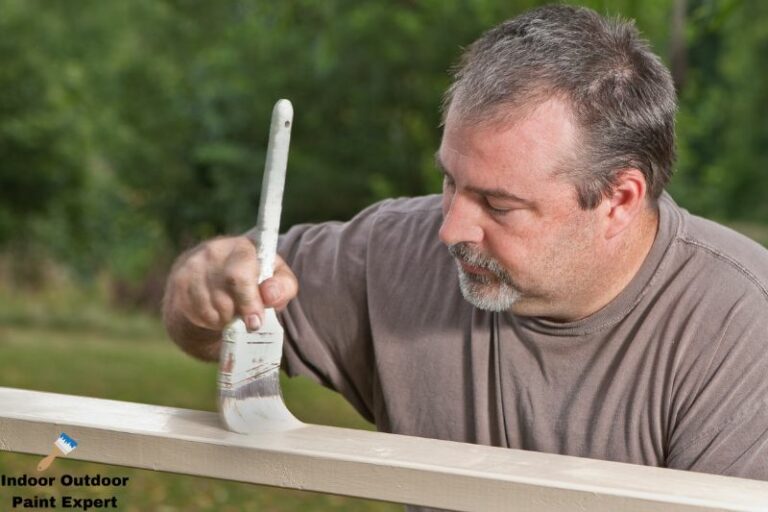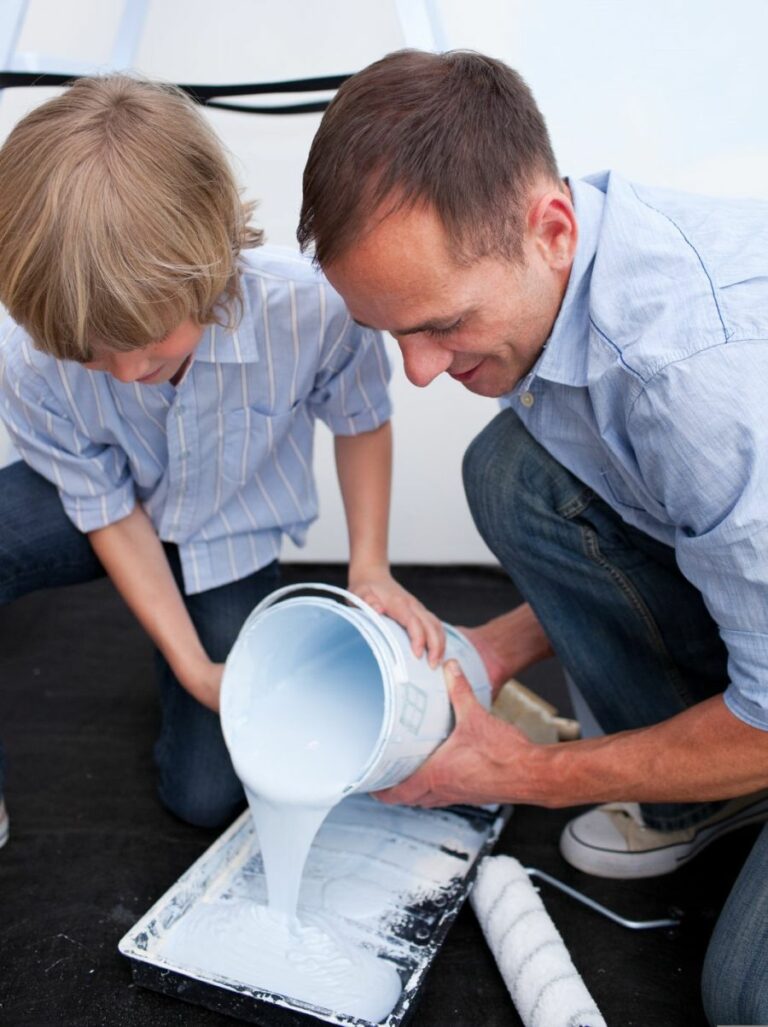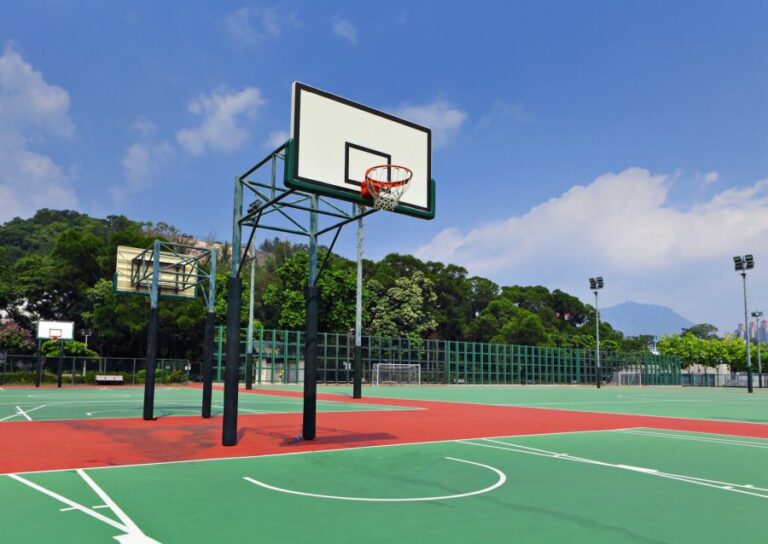Outdoor Ceramic Paint, 25 Things You Should Know
As an avid outdoor decorator and design enthusiast, I know the impact good quality paint can have on transforming your outdoor ceramics. Today, we’re going to dive into the world of outdoor ceramic paint and explore the best practices and recommendations for your projects. With my expertise and knowledge in this area, you can be certain that I’ll guide you to achieving vibrant, long-lasting results that truly elevate your outdoor space.
Outdoor ceramic paint:
Outdoor ceramic paint is designed to withstand various weather conditions, ensuring the durability and longevity of the painted object. Common types include acrylic latex, enamel, epoxy, and porcelain paint. This paint adheres well to ceramic surfaces, protecting them from dust, dirt, moisture, and UV rays. Proper surface preparation and application are essential for a successful result. Benefits include durability, protection, easy maintenance, and customization.

Love the idea of transforming your outdoor ceramics but are unsure about the right paint? Read on! Discover the world of outdoor ceramic paint, its types, applications, and tips, and give your projects a long-lasting and vibrant finish. Keep reading to get creative now!
Contents
- 1 Exterior Ceramic Coating Paint
- 2 What Type of Paint is Suitable for Outdoor Ceramic Surfaces?
- 3 Does Ceramic Paint Possess Waterproof Properties?
- 4 Is Ceramic Paint a Permanent Solution?
- 5 Assessing the Durability of Ceramic Paint Coatings
- 6 Which is the Most Superior Long-lasting Exterior Paint?
- 6.1 • Why Quality Exterior Paint Matters
- 6.2 • Durability: The Backbone of Permanent Exterior Paint
- 6.3 • Coverage and Ease of Application: Making Exterior Painting Manageable
- 6.4 • Environmentally Friendly Paint Options
- 6.5 • The Best Permanent Exterior Paint Brands
- 6.6 • Final Thoughts and Recommendations
- 7 What is the Most Suitable Type of Paint to Utilize on Ceramic Surfaces?
Exterior Ceramic Coating Paint
• Introduction to Outdoor Ceramic Paint
Outdoor ceramic paint is specially designed to withstand various weather conditions, making it a popular choice for exterior applications. These paints adhere well to ceramic surfaces and protect them from dust, dirt, moisture, and UV rays, ensuring the durability and longevity of the painted object.
• Types of Outdoor Ceramic Paint
Outdoor ceramic paints come in various formulas, each with its unique properties and qualities. Here’s a list of the most common types of outdoor ceramic paint:
– Acrylic Latex Paint
Acrylic latex paint is a water-based paint that provides excellent adhesion, durability, and resistance to various weather conditions. It’s fast-drying and can be easily applied using brushes or rollers. Acrylic latex paint is ideal for ceramics, as it adheres well and maintains its color for a long time.
– Enamel Paint
Enamel paint is an oil-based paint that offers a durable and glossy finish. This type of paint is more resistant to water, moisture, and extreme temperatures than acrylic latex paint. However, it takes more time to dry and can be more challenging to work with.
Enamel paint works well on ceramic surfaces and can withstand harsh outdoor conditions.
– Epoxy Paint
Epoxy paint is a two-component system consisting of an epoxy resin and a hardener, which are mixed before application. This paint forms a strong, durable, and waterproof bond with ceramic surfaces, making it perfect for outdoor applications.
Epoxy paint is resistant to UV rays, moisture, and chemicals, ensuring that your ceramics remain protected for a long time.
– Porcelain Paint
Porcelain paint is formulated specifically for use on ceramics and is known for its durability and weather resistance. This type of paint can be used outdoors as it adheres well to ceramic surfaces and is resistant to fading, chipping, and scratching.
Porcelain paint is available in various colors and finishes, allowing you to achieve a professional-looking finish on your ceramic projects.
• Preparing Ceramic Surfaces for Outdoor Paint
Proper surface preparation is essential to ensure a successful outdoor ceramic paint application. Here are some steps to guide you in adequately preparing your ceramic surface:
- Clean the surface: Remove any dirt, dust, or grease from the ceramic surface using mild detergent and warm water. Rinse thoroughly and allow the surface to dry completely.
- Repair any damages: Inspect the ceramic object for any cracks, chips, or other damages. If necessary, use a ceramic filler to restore its original condition. Once the filler has dried, sand the area gently to achieve a smooth, even surface.
- Prime the surface: Applying a primer to the ceramic surface helps to create a strong bond between the paint and the surface, ensuring a long-lasting finish. Choose a primer compatible with your chosen outdoor ceramic paint and apply it following the manufacturer’s instructions. Allow the primer to dry thoroughly before proceeding with the paint application.
• Applying Outdoor Ceramic Paint
Once the surface has been adequately prepared, you can proceed with the paint application, following these steps:
- Mix the paint: For epoxy paints, mix the epoxy resin and hardener as per the manufacturer’s instructions. For other types of outdoor ceramic paint, stir the paint thoroughly to ensure a smooth, even consistency.
- Apply the first coat: Using a brush or roller, apply the first coat of paint in smooth, long strokes. Be sure to cover the entire surface evenly, avoiding drips or runs. Allow the first coat to dry according to the manufacturer’s recommendations.
- Apply additional coats: Depending on the desired coverage and the paint’s opacity, you may need to apply additional coats. Allow each coat to dry before applying the next one.
- ** Seal the paint (if necessary):** Some outdoor ceramic paints may require the application of a sealant to protect the surface from moisture and other external factors. Follow the manufacturer’s recommendations to apply a compatible sealant if needed.
• Benefits of Outdoor Ceramic Paint
Using outdoor ceramic paint offers several advantages, some of which include:
- Durability: Outdoor ceramic paint is formulated to withstand various weather conditions, ensuring a long-lasting finish.
- Protection: The paint protects ceramic surfaces from fading, chipping, and scratching, preserving their integrity and appearance.
- Easy maintenance: Outdoor ceramic paint is typically easy to clean, requiring only a damp cloth or sponge to remove dust, dirt, and other debris.
- Customization: With a wide range of colors and finishes available, outdoor ceramic paint allows you to achieve the desired look for your ceramic projects.
• Conclusion
Outdoor ceramic paint is an excellent choice to protect and beautify your ceramics. Whether you’re painting a ceramic planter, statue, or other outdoor items, choosing the right type of outdoor ceramic paint and following the proper steps for surface preparation and application can help you achieve beautiful, long-lasting results.
For further information and guidance, visit The American Ceramic Society’s website for resources and expert advice on ceramic materials and applications.
What Type of Paint is Suitable for Outdoor Ceramic Surfaces?
Selecting the appropriate paint for outdoor ceramics can be a daunting task, especially for beginners. The climate and conditions outdoor ceramics are subjected to can significantly affect the longevity and vibrancy of the paint.
• Importance of Weather-Resistant Paints
Outdoor ceramics are constantly exposed to varying weather conditions, such as sunlight, rain, snow, and humidity. All these factors can affect the durability and appearance of the paint.
Thus, choosing weather-resistant paint is crucial for maintaining the visual appeal of your ceramics while ensuring they last longer. The following are some factors to consider when selecting the appropriate paint for outdoor ceramics.
– UV Resistance
Ultraviolet (UV) rays from the sun can cause fading and discoloration, ultimately reducing the vibrancy and beauty of the ceramics.
When choosing a paint for outdoor ceramics, it is essential to select one with UV-resistant properties. This will help maintain the color of the ceramics and provide protection against the sun’s damaging effects.
– Water Resistance
Water can wear down the paint or cause peeling, making the ceramics susceptible to cracks and other damage.
Water-resistant paints are vital for outdoor ceramics, especially in areas with heavy rainfall or humidity. They form a barrier that protects the surface from water damage, extending the ceramics’ lifespan.
– Flexibility
Outdoor ceramics may expand and contract due to fluctuations in temperature. To prevent cracks and peeling, choose a paint that offers flexibility to accommodate these changes, such as acrylic or latex paint.
These paints are less rigid, enabling the ceramics to expand and contract without affecting the painted surface.
– Non-toxic
It is essential to choose non-toxic paint, especially for outdoor ceramics placed in areas accessible to children and pets. Many paints contain harmful chemicals that may pose health and environmental risks.
Non-toxic paints, like water-based acrylic or latex, are safer options and comply with environmental regulations.
• Types of Paint for Outdoor Ceramics
There are different types of paints suitable for outdoor ceramics. Based on the factors mentioned above, the following are the most widely-recommended options.
– Acrylic Paint
Acrylic paint is water-based and widely used for outdoor ceramics due to its versatility, durability, and vibrant colors. It offers excellent UV resistance and adhesion, making it suitable for various surfaces, including ceramics, wood, and metal.
Acrylic paint dries quickly and forms a flexible, water-resistant coating that can withstand temperature fluctuations.
– Latex Paint
Latex paint is another water-based paint ideal for outdoor ceramics. It has similar properties to acrylic paint, offering excellent durability, flexibility, and water resistance.
Latex paint is easy to apply, clean up and dries relatively quickly. It is non-toxic and has low VOC (Volatile Organic Compounds) levels, making it an environmentally friendly option.
– Enamel Paint
Enamel paint is a suitable option for outdoor ceramics that need a glossy and durable finish. It is ideal for projects requiring a smooth, hard surface that can resist scratches and damage.
Oil-based enamel paints provide exceptional durability but may have a longer drying time and emit higher levels of VOCs. Water-based enamel paints offer a more eco-friendly option with similar benefits.
– High-Temperature Paint
For outdoor ceramics exposed to extreme temperatures, such as chimeneas or barbecues, high-temperature paint is recommended. These paints are designed to withstand high temperatures without cracking, peeling, or fading, offering prolonged protection to the ceramic surface.
• Tips on Painting Outdoor Ceramics
To achieve the best results when painting outdoor ceramics, follow these tips:
- Clean the surface: Before painting, ensure the ceramics are clean and free of dust or contaminants. Use mild soap and water to clean the surface, then rinse and allow it to dry thoroughly.
- Prime the surface: Applying a primer creates a smooth, uniform surface that enhances paint adhesion and coverage. Choose a primer compatible with the selected paint, and follow the manufacturer’s instructions for application and drying time.
- Apply multiple coats: For better coverage and durability, apply multiple thin coats of paint, allowing each coat to dry according to the manufacturer’s instructions.
- Seal the paint: To further protect the paint and enhance its durability, apply a clear sealer compatible with the paint type. Sealer options include varnishes, lacquers, or urethanes that provide a protective layer against weather conditions and UV rays.
In conclusion, choosing the right paint for your outdoor ceramics is crucial for ensuring long-lasting, attractive results. Acrylic, latex, enamel, and high-temperature paints are popular options based on their properties and performance.
Keep in mind factors like UV resistance, water resistance, flexibility, and non-toxicity when selecting the appropriate paint, and follow best practices for surface preparation and application for a successful outcome.
Brand | Type | Description |
|---|---|---|
FolkArt | Outdoor Acrylic Paint | Specifically designed for outdoor use on ceramics and other surfaces. UV and weather resistant. |
Rust-Oleum | Protective Enamel Spray Paint | Provides a durable, protective coating for ceramics that withstands outdoor conditions. Available in various colors. |
Montana | GOLD Spray Paint | High-quality, weather-resistant spray paint ideal for outdoor use on ceramic products. Fast-drying and fade-resistant. |
Krylon | Fusion All-In-One Spray Paint | Combines paint and primer for maximum adhesion on ceramics. Weather-resistant finish for outdoor use. |
Liquitex | Professional Heavy Body Acrylic Paint | Highly pigmented, weather-resistant paint for outdoor ceramic projects. Can be mixed with mediums for added durability. |
Does Ceramic Paint Possess Waterproof Properties?
• Understanding Ceramic Paints
Ceramic paints are a type of advanced coating material that typically consists of ceramic particles, resins, and other additives. The combination of components in the ceramic paint formulation is designed to provide benefits such as improved durability, higher heat resistance, and water-repellent properties.
In recent years, ceramic paint technology has become an increasingly popular choice for various applications, from automotive to home exteriors, due to its impressive ability to protect surfaces from environmental damage and extend the lifespan of the coated material.
One of the critical questions that arise concerning ceramic paints is whether or not they are waterproof. Understanding whether ceramic paint is waterproof is essential for determining the best ways to use it and the specific circumstances where it will provide optimal protection.
• Waterproof vs. Water-Repellent: What’s the Difference?
Before delving deeper into the matter of ceramic paint’s waterproof capabilities, it is crucial to clarify the difference between waterproof and water-repellent. These two terms are often used interchangeably, but they have different meanings when it comes to describing the properties of a paint or coating.
- Waterproof implies that material is entirely impervious to water and can completely resist penetration. A waterproof coating typically creates a barrier that prevents water from infiltrating or causing damage to a surface, even when submerged in water for extended periods.
- Water-repellent means that a material can resist the absorption of water but is not entirely impervious to water penetration. Water-repellent coatings generally protect a surface by causing water to bead up and roll off rather than penetrate and cause damage. However, water-repellent materials may not fully protect surfaces when exposed to water for prolonged periods or under high-pressure situations.
• Examining the Water Resistance of Ceramic Paint
To accurately address whether ceramic paint is waterproof, we must consider its ability to form a barrier against water penetration and its efficacy in repelling water, even under challenging conditions.
Many high-quality ceramic paints contain hydrophobic properties, meaning they actively repel water. This phenomenon is often referred to as the ‘lotus effect,’ as it mimics the natural self-cleaning and waterproof properties of a lotus leaf.
The ceramic particles in the paint create microscopic valleys and peaks on the surface, effectively trapping air and causing water to bead up and roll off. This self-cleaning action can help keep surfaces clean, preventing damage from prolonged exposure to moisture.
As a result, many ceramic paints can be considered highly water-repellent, making them an excellent choice to protect surfaces from moisture-related damage.
However, it is essential to recognize that no paint can offer absolute waterproof protection for an indefinite time, as all coatings may degrade or wear down under specific circumstances or challenging environments.
As such, ceramic paint should not be classified as completely waterproof, although it is highly resistant to water penetration.
• Recommendations for Optimal Water Resistance
To obtain the best waterproofing performance from ceramic paint, certain steps should be taken:
- Choose high-quality ceramic paint products: Opt for reputable brands and select products specifically formulated to offer hydrophobic properties and protection against water infiltration.
- Prepare surfaces properly: Proper cleaning and preparation of the surface are essential for paint adhesion and performance. Remove all dirt and debris, repair any cracks or damage, and ensure the surface is dry before painting.
- Apply multiple coats: Applying multiple coats of ceramic paint can enhance water resistance and overall protection. Follow the manufacturer’s guidelines for specific product recommendations and drying times.
- Maintain and inspect regularly: Periodically inspecting the painted surface and performing necessary maintenance can help extend the lifespan of the coating and ensure optimal performance.
- Seek professional guidance: When faced with unique or challenging situations, consult a paint or coatings professional to make certain that you are choosing the right solution for your specific application.
• Helpful Resources for Further Research
To learn more about ceramic paint technology and its ability to protect against water damage, consult authoritative sources such as industry associations, academic research institutions, and government agencies.
The National Institute of Standards and Technology (NIST) is one such resource that regularly publishes reports and findings on material science and coating technologies.
Their extensive database offers information on a range of topics, including ceramic paint benefits, research developments, and practical applications.
Is Ceramic Paint a Permanent Solution?
When it comes to choosing a paint for your next project, whether it be painting your home, an artistic piece, or any surface that requires durability and longevity, many people consider using ceramic paint. But is ceramic paint permanent?
• What is Ceramic Paint?
Ceramic paint is a type of paint made with ceramic microspheres, which are tiny, sphere-shaped particles made of ceramic materials. These ceramic microspheres help to improve the durability, energy efficiency, and overall performance of the paint.
Ceramic paint is primarily used for applications where long-lasting durability and heat resistance are essential, such as exterior house painting, automotive, and high-temperature surfaces like ovens and grills.
– Ceramic Paint Properties
- Durability: Ceramic paint is known for its exceptional durability due to its chemical composition and resistance to temperature fluctuations. The ceramic microspheres in the paint create a tightly bonded, dense protective layer, which allows the paint to withstand harsh weather conditions, UV rays, chemicals, and even minor physical damage.
- Energy Efficiency: Due to the reflective properties of the ceramic microspheres, ceramic paint can effectively reduce heat transfer through surfaces, keeping interiors cooler in the summer and warmer in the winter. This can improve energy efficiency by reducing the need for air conditioning and heating, ultimately increasing the lifespan of various surfaces like walls and roofs.
- Non-Porous Surface: Ceramic paint creates a non-porous surface, which prevents moisture and mildew from seeping in and causing damage. This property also makes it resistant to staining and easier to clean compared to traditional paints.
• Advantages of Ceramic Paint
– Long-lasting Protection
One of the main benefits of ceramic paint is that it provides long-lasting protection to the surfaces it is applied to. The chemical composition and presence of ceramic microspheres in the paint create a robust and bonded protective layer that can endure wear and tear for an extended period.
According to a study from Oak Ridge National Laboratory, ceramic paint can last up to three times longer than traditional paints, making it an excellent option for those looking for a long-term, durable solution.
– Improved Energy Efficiency
Ceramic paint’s reflective properties are responsible for increased energy efficiency. This makes it a particularly beneficial choice for surfaces exposed to direct sunlight or heat, as it can help insulate and maintain a more stable temperature.
As a result, the use of ceramic paint can lead to savings on energy bills and a decreased carbon footprint.
– Low Maintenance and Easy Cleaning
The non-porous, tightly bonded surface of ceramic paint is resistant to bacteria, mildew, and staining. The smooth finish reduces dirt accumulation, making cleaning the painted surface much more manageable, often requiring only warm water and mild detergent.
• Limitations of Ceramic Paint
– Higher Cost
One of the primary drawbacks of ceramic paint is its higher cost. Ceramic paint can be significantly more expensive than traditional paints, with a price tag that reflects its improved properties and lasting durability.
While the initial investment may be higher, the long-term benefits in terms of longevity and minimal maintenance can offset the cost.
– Limited Color Options
Ceramic paint may not offer as wide a range of color options compared to standard paints. Due to the unique properties of ceramic microspheres, certain pigments may not be compatible with the ceramic paint formula.
However, many manufacturers still offer a variety of color choices, so it’s essential to research and find a brand that meets your specific requirements.
• So, is Ceramic Paint Permanent?
While no paint can be considered entirely permanent, ceramic paint stands out for its exceptionally durable and long-lasting properties. With proper surface preparation, application, and maintenance, ceramic paint can provide lasting performance that surpasses conventional paints.
Its ability to withstand harsh weather conditions, resist staining, and minimize heat transfer makes it a powerful choice for projects where durability and energy efficiency are critical.
In conclusion, while ceramic paint may not be “permanent” in the strictest sense, its impressive properties position it as one of the most durable and long-lasting paint options on the market.
For those seeking a long-term, protective solution for their painting projects, ceramic paint is definitely worth considering.
Assessing the Durability of Ceramic Paint Coatings
Ceramic paint has become increasingly popular due to its durability, protection, and aesthetic enhancements. Homeowners, car enthusiasts, and professionals alike are turning to ceramic coatings as their go-to solution for various surfaces.
• What is Ceramic Paint?
Ceramic paint, also known as ceramic coating, is a liquid polymer that chemically bonds with the surface to which it is applied. This creates a strong, protective layer on surfaces such as cars, boats, and homes.
The ceramic paint is typically composed of silica, titanium dioxide, and other nano-ceramic particles, offering numerous benefits such as resistance to scratches, weather elements, and UV rays.
• Durability of Ceramic Paint on Different Surfaces
– Automotive Applications
Ceramic paint is highly regarded for its durability in automotive applications. Its hydrophobic nature repels water and dirt, making it easier to maintain the car’s exterior.
By providing an additional layer of protection, ceramic coatings can prevent minor scratches, oxidation, and other damage caused by daily wear and tear.
When properly applied and maintained, a high-quality ceramic coating can last anywhere between 2-5 years on cars. This longevity far exceeds that of traditional wax or sealant products, which typically need to be reapplied every few months.
Recommendation: Opt for a reputable professional ceramic coating service, as it requires thorough preparation and precise application for optimal results.
– Marine Applications
Ceramic paint is also proving its worth in the marine industry due to its ability to withstand harsh environmental conditions. Protecting a boat’s hull and equipment with ceramic paint can prevent damage from UV rays, oxidation, and saltwater erosion.
Ceramic coatings can last up to 3 years on marine vessels, depending on the quality of the paint and how well it is maintained.
Recommendation: Consult a marine professional for guidance on the best ceramic paint for your specific vessel, as well as tips on maintenance and application techniques.
– Residential and Commercial Applications
Ceramic paint coatings have been gaining popularity in residential and commercial applications as a durable, low-maintenance alternative to traditional paint.
By creating a protective barrier against the elements, ceramic paint can help prevent fading, chipping, and other damage caused by UV rays, temperature fluctuations, and weather.
Ceramic paint can easily last 8-10 years on a building’s exterior, providing excellent long-term value compared to traditional paint, which often requires touch-ups and repainting every few years.
Recommendation: Proper surface preparation and application techniques are crucial to achieving the best results. Hire a skilled professional to ensure the correct procedures are followed.
• Maintenance Tips for Prolonging Ceramic Paint Lifespan
Here are some maintenance tips to ensure your ceramic paint coating remains durable and effective:
- Regularly clean the coated surface using the two-bucket wash method and pH-neutral soap. Avoid using abrasive materials that could potentially scratch the ceramic coating.
- Do not use strong chemical cleaners, as they can potentially degrade the performance of the ceramic paint. Instead, opt for specially formulated products designed to enhance and protect ceramic coatings.
- Apply a ceramic paint maintenance spray or booster product every 6-12 months. This will help maintain the coating’s hydrophobic properties and prolong its lifespan.
- Avoid using high-pressure washers at close range, as they can potentially damage the ceramic coating. Instead, opt for a gentler washing method that still effectively removes dirt and grime.
• Conclusion
Ceramic paint is undoubtedly a durable and reliable coating solution for a range of surfaces, offering long-lasting protection and an attractive finish. By following the appropriate application and maintenance procedures, ceramic paint can provide years of protection.
For more information on ceramic paint and its applications, visit the National Institute of Standards and Technology website. They provide valuable resources and research on various coating and surface protection technologies.
Which is the Most Superior Long-lasting Exterior Paint?
• Why Quality Exterior Paint Matters
As a homeowner, you want your house to not only look good but also last longer in the face of various environmental factors such as sun, rain, and cold. Exterior paint plays a significant role in protecting your home from these elements, and it is critical to choose high-quality paint to ensure long-lasting results.
As an expert, I’ll provide you with a comprehensive guide to finding the best permanent exterior paint, considering factors such as durability, coverage, ease of application, and environmental impact.
• Durability: The Backbone of Permanent Exterior Paint
Durability is the ability of paint to withstand the test of time and environmental factors, maintaining its original appearance and finish for an extended period.
The best permanent exterior paints offer long-lasting durability through the use of high-quality ingredients, advanced formulations, and UV-resistant pigments. When choosing paint for your home’s exterior, ensure that it can stand up to extreme weather conditions and constant exposure to sunlight.
– Acrylic Latex Paint: A Popular Choice for Durability and Resistance
Acrylic latex paint, also known as 100% acrylic paint, is a popular choice among homeowners due to its exceptional durability and resistance to various external factors.
This type of paint is made from a blend of acrylic and latex resins, providing excellent adhesion to various surfaces, including wood, masonry, and metal. Furthermore, acrylic latex paint is resistant to cracking, peeling, and fading, ensuring that your home’s exterior remains protected for years to come.
– Elastomeric Paint: A Heavy Duty Alternative to Acrylic Latex Paint
If your home is located in an area with extreme weather conditions or requires specialized protection, elastomeric paint may be the most appropriate choice. Elastomeric paint is a high-build, rubberized coating that offers unmatched durability and waterproofing capabilities.
Thanks to its elasticity, elastomeric paint can expand and contract with changing temperatures, preventing cracking and peeling over time.
Recommendation: For long-lasting durability and protection against weather and environmental elements, I recommend choosing either acrylic latex or elastomeric paint for your home’s exterior.
• Coverage and Ease of Application: Making Exterior Painting Manageable
Another crucial factor to consider when selecting the best permanent exterior paint is its coverage and ease of application. A paint that offers excellent coverage will require fewer coats, saving you time and effort during the painting process.
Additionally, paint with a reliable formula that is easy to apply and smooth out will result in a professional-looking finish.
– Acrylic Latex Paint: A Balance of Coverage and Simplicity
Once again, acrylic latex paint outshines other options when it comes to coverage and application. Many acrylic latex paints feature advanced formulations that allow for a smooth and even application, resulting in a uniform finish.
Additionally, these paints typically offer excellent coverage, often requiring only one or two coats to achieve the desired appearance.
Recommendation: I recommend choosing acrylic latex paint with a high-quality formulation that ensures optimal coverage and ease of application.
• Environmentally Friendly Paint Options
In recent years, there has been a growing concern about the environmental impact of paints and their potential effects on human health. As a response, the paint industry has developed several environmentally friendly options that emit fewer harmful chemicals and fumes.
When considering exterior paint options, it’s essential to opt for one with low volatile organic compounds (VOCs) to minimize the potential negative impacts on the environment and your family’s health.
Recommendation: I recommend looking for paints labeled low-VOC or zero-VOC for a more eco-conscious choice.
• The Best Permanent Exterior Paint Brands
Through my experience working with various exterior paints, I can confidently recommend the following brands as producing some of the best permanent exterior paint options available on the market:
When selecting a paint brand, keep in mind the previously mentioned factors, such as durability, coverage, application, and environmental impact. Compare different options and choose the one that best suits your home, location, and personal preferences.
• Final Thoughts and Recommendations
In conclusion, the best permanent exterior paint will offer excellent durability, coverage, ease of application, and minimal environmental impact. Through my experience, I believe that acrylic latex paint is the most well-rounded option for most homeowners due to its balance of these factors.
However, elastomeric paint may be more suitable for those living in extreme weather conditions or requiring specialized protection.
I recommend researching different paint options and consulting with local paint professionals to ensure that you choose the best paint for your specific needs.
By taking the time to make an informed decision, you’ll be investing in your home’s long-term protection and appearance, enhancing its value and curb appeal for years to come.
Brand | Type | Features |
|---|---|---|
Benjamin Moore | Regal Select Exterior | High durability, fade resistance, long-lasting |
Sherwin-Williams | Emerald Exterior | Self-cleaning, exceptional resistance to blistering, peeling and color fade |
Behr | Marquee Exterior | One-coat coverage, UV protection, superior mildew resistance |
Pittsburgh Paints & Stains | Paramount Exterior | Adhesion, flexibility, UV protection and advanced dirt resistance |
PPG | Timeless Exterior | Excellent UV protection, one-coat coverage, adhesion and dirt resistance |
What is the Most Suitable Type of Paint to Utilize on Ceramic Surfaces?
Painting ceramics can be an enjoyable and relaxing activity, whether you’re a professional artist or a hobbyist looking to personalize your pottery. The key to achieving outstanding results on your ceramic pieces is selecting the best paint for the job.
• Understanding Ceramic Surfaces
Before we dive into the various types of paint suitable for ceramics, it’s crucial to understand the ceramic surfaces you’ll be working with. There are three primary categories of ceramics: greenware, bisque, and glazed ceramics.
Greenware is an un-fired ceramic piece, bisque is a fired ceramic piece that’s ready for glaze application, and glazed ceramics have a finished surface, making the application of paint more challenging. Knowing which stage your ceramic piece is in will help you choose the appropriate paint for the job.
• Ceramic Paint Types: Choosing the Best Option for Your Project
There are several types of paint available for use on ceramics, each with its own unique characteristics, advantages, and disadvantages. In this section, we’ll explore each option to help you make an informed decision.
– Acrylic Paint
Acrylic paint is a versatile and affordable option that can be used on various surfaces, including ceramics.
This water-based paint dries quickly and can be easily mixed to create custom colors. Acrylic paint offers excellent coverage, making it an excellent option for detailing and decorative painting on bisque ceramics.
When using acrylic paint on ceramics, it’s essential to apply a clear sealer to protect the paint from chipping and wear, as acrylic paint is not heat or water-resistant on its own. Keep in mind that acrylic paint is not recommended for functional ceramics such as dinnerware, as it is not food-safe.
Pros: Affordable, easy to use, and offers good coverage. Cons: Requires a sealer and not food-safe.
– Underglazes and Glazes
For individuals seeking to create functional ceramic pieces, such as dinnerware, using underglazes and glazes is the best option. These specialized ceramic paints are designed to be used on greenware or bisque ceramics, with the painted piece fired in a kiln after the application.
Underglazes and glazes come in various colors and finishes, allowing artists to achieve stunning results on their ceramic pieces.
Underglazes are used for detailed painting and design work, while glazes create a smooth, glossy finish that adds durability and protection to the ceramic piece. When using underglazes and glazes, it is essential to follow the manufacturer’s firing instructions to achieve the best possible results.
- Pros: Ideal for functional ceramics, durable, and food-safe.
- Cons: Requires kiln firing and might have a steeper learning curve for beginners.
– Ceramic Paint Markers
For those looking for an easy and precise way to add designs to their ceramics, ceramic paint markers are an excellent choice.
These markers contain a specially-formulated paint for use on glazed ceramics, making them ideal for adding intricate designs, patterns, and lettering. Ceramic paint markers offer a convenient and mess-free alternative to traditional brushes and are perfect for personalizing ceramic items.
To ensure the longevity of designs created with ceramic paint markers, it is necessary to heat set the paint by baking the piece in an oven following the manufacturer’s instructions. This process makes the paint more durable and resistant to wear, although not as resilient as kiln-fired underglazes and glazes.
- Pros: Easy to use, precise, and versatile.
- Cons: Not as durable as kiln-fired paints, and may require heat setting.
• Tips for Painting Ceramics
Here are some useful tips to ensure the success of your ceramic painting project:
- Clean the surface: Before applying paint to any ceramic piece, it’s essential to clean the surface thoroughly, removing any dirt, dust, or oils that may interfere with paint adhesion.
- Use appropriate brushes: Use high-quality brushes suitable for the type of paint you have chosen. Using the right brushes will ensure smooth paint application and minimize the risk of brush marks.
- Practice your technique: Before painting your ceramic piece, test your paint on a scrap piece of ceramic or paper to get a feel for the paint’s behavior and consistency. This practice will help you perfect your technique and avoid potential issues with the final piece.
- Apply multiple coats: To achieve an even and polished finish on your ceramic piece, you may need to apply multiple coats of paint. Allow each layer to dry thoroughly before applying the next coat.
- Protect your work: Once your ceramic piece is complete, follow the recommended sealing or firing process for your chosen paint to ensure your design is long-lasting and durable.
• Conclusion
Choosing the best paint for your ceramic project depends on the type of ceramic piece, its intended use, and your desired outcome. For functional ceramics, underglazes, and glazes are the best choice due to their durability and food-safe properties. Acrylic paint and ceramic paint markers offer versatile and accessible options for decorative pieces but may require additional steps like sealing or heat setting to ensure longevity. With this comprehensive guide, you can confidently choose the perfect paint for your ceramic projects and achieve impressive results every time. For more information on ceramic materials and techniques, visit American Ceramic Supply’s educational resources.
Type of Paint | Advantages | Disadvantages |
|---|---|---|
Acrylic Paint | Easily available, affordable, wide color range, easy to apply and clean up. | Not as durable as other paints, may require sealing for long-lasting results. |
Ceramic Paint | Specifically designed for ceramics, long-lasting, more resistant to damage. | Higher cost, limited color range, may require application in a controlled environment. |
Oil-based Paint | High level of durability, nice smooth finish. | Long drying time, strong odor, difficult to clean up, may require multiple coats. |
Porcelain or China Paint | Designed specifically for non-porous surfaces, very durable when cured properly. | Expensive, limited color range, requires firing in a kiln to set. |

